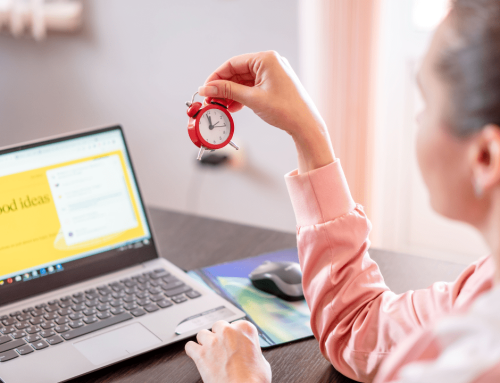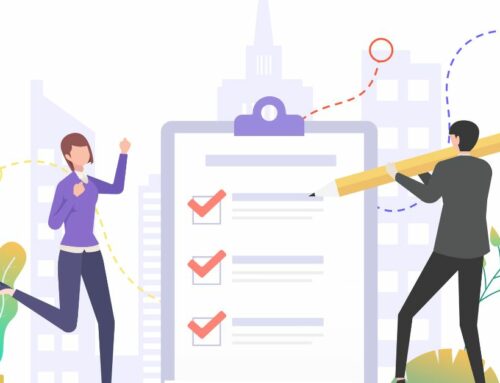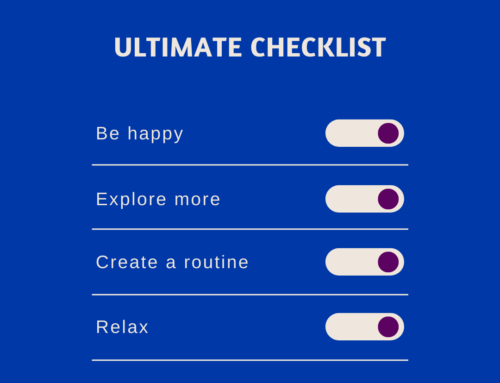“What would you need to do to be able to leave the office an hour earlier each day?”
That’s a question I asked a client last week. Here’s his response:
CLIENT – “I own my own business; I can leave whenever I want.”
ME – [PAUSE]
CLIENT – “Well, I mean, I just don’t leave early very often, because I want to make sure I do everything I need to for all my clients. I’m working with their money and I take that very seriously. When I leave before all the work is done (or at least the most urgent stuff) I feel like I’m letting someone down.”
The struggle is real – if you stay in the office to finish up one more thing for a client, you feel like you should be home – but when you leave to go home, you think about all the client work you left unfinished.
Plus, if you add working remotely, work can have a way of sliding into all areas of your life – especially when you love what you do and are excited to serve your clients each day.
“I’m working from home where there aren’t a lot of boundaries because the office is right there in the other room and I’m just a phone call or email away,” offers CFP® Candidate Sean Plunkett of One & Done Financial. “We are taking care of people and they are coming to us with their needs and their issues that we’re here to solve, and it is hard not to let it bleed over.”
This isn’t an either-or scenario.
You CAN love the work you do each day, serve MORE clients AND work less. It’s just about figuring out the process that works for you. When you know you have a plan for ALL the work, you can leave without guilt!
I reached out to financial advisors, financial planners, and accountants to find out some of their favorite time management strategies – plus threw in a few of my own! This post focuses on mindset, planning, and email management, while future articles will cover delegating effectively and using automation.
IMPORTANT: Some of the following strategies you may have heard before . . . so do a quick check. How many of these are you actually consistently implementing? It is not enough to KNOW it – you actually need to DO it in order to make progress!
STRATEGY #1 – MINDSET:
Doesn’t everything really start with mindset?! If you believe you CAN leave the office earlier, you will do whatever it takes to make it actually happen.
- To borrow Simon Sinek’s line, “Start with why!” I often ask my clients, “Why would you want to leave the office an hour earlier?” Once you identify your “why” it becomes concrete instead of just an abstract idea. It is easier to put strategies in place (and follow through on them) when the reason is concrete. Another way to keep your eye on what’s important – Sean recommends listing your priorities and your values, then tracking your time to see where you actually are spending it. This can be an eye-opening exercise and a great motivator to set – and keep – your work boundaries clear.
- Once you have the reason for leaving early, you will also need a way to keep that reason front and center . . . otherwise it is easy to fall into “work, work, work” tendencies. Derek Hagen, CFP®, FBS®, CFT-I™, CFA, and founder of Money Health Solutions, will use the statement, “I’m the person who . . . ” (as heard in a Seth Godin podcast) when he feels the pull to stay in the office longer. Is he the person who spends time with family or is he the person who breaks promises and stays in his office? Is he the person who “wings it” all day or is a person who has a plan?
- At the end of the day, Haley Stewart (Senior Accountant, FA Bean Counters) realized, “I wasn’t doing my best work anyway. So there’s no point in me being in the office for that final hour because I wasn’t getting anything done. Half the time I’d come back on Monday and realize the work I did late Friday makes no sense.” Leaving and returning when she was rested and recharged made much more sense.
- Finally, remember that time is a finite resource. You cannot possibly “create more time” so it is key to be intentional as you use it. One of the philosophies Richard Salmen, CFP®, CFA®, EA, and President of Family Investment Center, lives by is the YES / NO philosophy:
“One of the best things I ever heard was every YES is a NO to something else. That’s a filter that I use all the time, because I can’t do everything. I don’t want to do everything. And as you get more successful you get asked to do more things. When you say YES to a request it means you are saying NO to other requests, even if you don’t realize it.”
OK – so now that you understand and believe that leaving the office earlier is beneficial for you, your family, and your clients, and that you can’t possibly do EVERYTHING, the question becomes . . .
…How?
STRATEGY #2 – PLANNING
The first place to start is planning! You will never get all the work done, but you can plan your day so you consistently get the most important work accomplished — which will make it much less stressful to leave the office!
“Every minute you spend in planning saves 10 minutes in execution; this gives you a 1,000 percent Return on Energy!” ― Brian Tracy.
So 30 minutes planning saves you five hours in the long run!
Often clients will share that they “get” the idea of planning, but they don’t exactly know how to plan.
- First, decide when you are going to plan. Cameo Roberson, AAMS®, founder of Atlas Park Consulting, is a huge advocate for identifying the important items first.
“At the beginning of each week, if you can, identify the critical action items that you need to get done and prioritize those. These are things that are going to push your business forward and push your ability to serve clients better forward. If you get these things done, your “big rock” items that are important, you’ll be ahead.”
- Then, decide when you are going to do these tasks. After starting his day with an injection of reality by checking his bank balances, then completing the income-producing activities notated in his CRM, Jason Howell, CFP®, looks at his to-do list and creates due dates based on reality – not magical thinking.
“I actually put the tasks and projects into the calendar at a certain time. There were only so many things I could put in my calendar because I had meetings, I had lunch, I had to commute to meetings. Then I realized, ‘Oh, I guess that’s all I’m getting done today because that’s all I have time for.’ What’s great is I went through that calendar with these tasks as if they were appointments. I put reasonable times for them, and I completed them all.”
Derek says, “When deciding when to schedule tasks into your calendar, schedule your free time first. “You need to have permission to recharge, and according to Carl Richards, you need unstructured, free time or play. This should be a prerequisite for doing your good work, not a reward for it.”
- Finally, close out your day by resetting your plan for tomorrow, which creates clarity. “When you spend that last hour planning the next day, it’s easier to leave early because then you get clarity around how much you really have to do – and it may not be as much as you think,” explains Charesse Hagan.
STRATEGY #3 – EMAIL
Next, let’s talk email. You can easily save an hour each day if you just get a handle on your email! Amy Irvine, CFP®, EA, MPAS®, CCFC, and founder of Rooted Financial Group, did a time study for four months with her staff, and “it became evident to me that email was a time suck. And so that’s when we decided to use G-Suite and learned how to do all these filters and different folders.”
Here’s the email plan Arielle Minicozzi, CFP®, CSLP®, Modern Money Advisor, uses to streamline her inbox.
1. Make sure as little as possible that’s not important comes in first – unsubscribe from everything or have a separate email for your newsletters and a completely separate email for your work-related things.
2. Whether it is automated or manual, push out the information to the people who need to handle it. (And that doesn’t always have to be you!)
3. Have some sort of strategy for sorting through those emails. And again, that could be automated, but it doesn’t have to be. Make sure that you’re organizing them way that you can see what’s most important. And then what’s not so important that still needs to get done eventually, and things that really don’t matter, when we get to it.
- Staying in your inbox all day can be exhausting and a productivity drain. Cameo recommends “having designated hours where you check email and respond to email. This is a good thing to keep you on track and not get distracted so much that you’re not able to get things done on your to-do list.”
- Speaking of designated hours for email – here’s one way I help my clients figure out when to plan their email time. It’s based on emergencies. Identify which emergencies that happen in your business you would only know about via email. If you can’t think of any (most true emergencies come via phone!) then you can choose two or three email times per day without worrying about missing something important. However, if you know that some emails truly are urgent, determine what delay you feel comfortable with for answering that email. (For many financial advisors, that timing is around two hours.) Use that as your baseline for how many check-ins to schedule and when.
So, now you have a mindset to focus on keeping the “big picture” in the forefront, you have a plan of attack for each day, and you employ a strong email strategy. Implementing at least one of these three strategies will help you shave at least one hour off your workday!
Wondering how to implement?
Your existing time management skills got you this far. But, your life is busier, and your business has grown. It is time to master the next level in productivity.
When you are ready to upgrade your skills, schedule an Action Call at www.ConnectWithLisa.com.







Leave A Comment